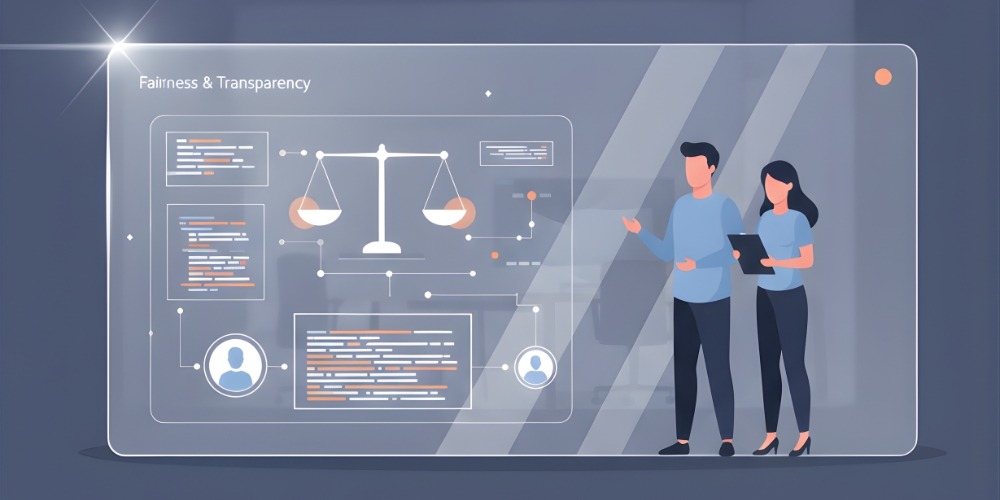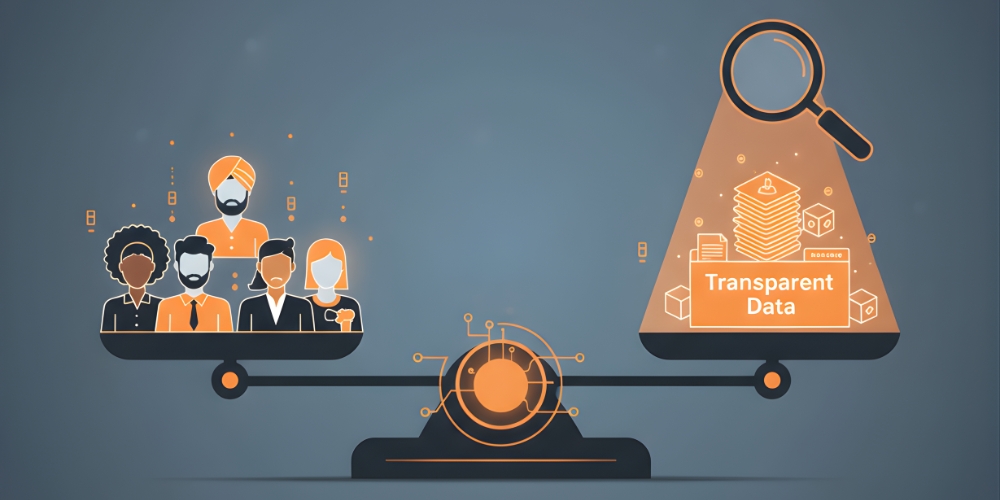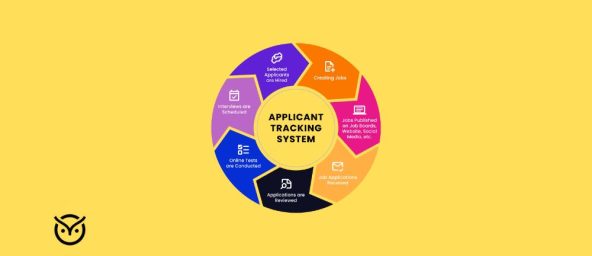
TL;DR
- Bias in hiring algorithms can block good candidates.
- Sharing algorithm data builds trust and reveals unfair patterns.
- AI Talent Software helps reduce unconscious bias in hiring.
- Talent assessment tools can reveal gender bias in job descriptions.
- Learn what bias is, why transparency matters and how to fix it.
HR teams once received job applications directly and made all hiring decisions themselves. But today, many organisations rely on systems and algorithms which introduce a new challenge. Even when people intend fairness, hidden bias in hiring algorithms can sneak into decisions. This can exclude good candidates before a human even reads their file. The result is frustration for applicants and missed opportunities for companies.
They can solve this issue by using data transparency. It helps organizations show how decisions are made, fix hidden unfairness and use inclusive strategies to build fairer hiring results. This blog explains what hidden bias looks like, why transparency matters, and how reducing unconscious bias in hiring works.
What Is Hidden Bias in Hiring Algorithms?

When companies use algorithms in their recruitment processes, they believe they are speeding up work and making fairer choices. Yet sometimes hidden traps lie beneath. For example, suppose a system is trained on years of past hiring data but those past hires favoured one demographic group. In that case, the algorithm may learn to favour the same group rather than recognising the best candidate.
A 2024 University of Washington study found that some AI résumé-screening tools rated white-sounding names about 85% of the time and female-sounding names only 11%, exposing clear bias in automated hiring.
Hidden bias may also show up in what the algorithm pays attention to: perhaps it favours graduates of elite colleges, penalises candidates who used non-traditional career paths or overlooks applicants from underrepresented backgrounds. That means the algorithm is silently reinforcing old patterns of exclusion even when no one intended it. And when the screening is fully automated (for example, in blind resume screening or digital scoring), it becomes difficult to recognise and correct the bias.
Why Transparency Matters

Transparency is essential if we want to make fair hiring work. When algorithms make decisions but the process is hidden, candidates, recruiters and regulators remain in the dark. And without visibility, it is hard to spot flawed assumptions or unfair outcomes.
When a company shares how it uses data and algorithms, it creates visibility into its operations. Showing how many candidates from each group were screened, shortlisted and hired helps reveal patterns. This makes it easier to spot gender bias in job descriptions or the exclusion of people from non-traditional backgrounds. Good transparency builds accountability and helps move away from excuse-driven processes (“the algorithm just did it”) to meaningful reviews.
Moreover, transparency enables practical tools like effective diversity sourcing tips for talent assessment, effective diversity hiring strategies for talent assessment or boost gender diversity in talent assessments to do their job. If we don’t know what our algorithm is doing, we can’t improve it.
Research also shows that even if an algorithm is well-designed, simply relying on it without showing how it works rarely improves diversity. A May 2025 study from the University of South Australia found that diversity only enhanced when the tool could explain its decisions and was backed by organisational commitment.
How Data Transparency Reduces Bias

Transparency works like switching on the lights in a dark room. When everyone can see what data an algorithm uses and how it makes decisions, it becomes easier to notice bias before it grows.
An effective way to reduce bias in hiring algorithms is through data audits. Regular audits reveal patterns, such as whether certain keywords are unfairly weighted or whether specific demographics are underrepresented on shortlists. Publicly sharing these audits even in summary, builds trust with candidates and regulators while keeping teams accountable.
Transparency also helps recruiters craft fairer interviews. When data shows who gets filtered out, talent teams can optimize DEI interview questions for better hiring or refine their screening prompts. Similarly, transparent algorithms help design better job ads. By understanding which phrases discourage applicants, recruiters can tackle gender bias in job descriptions and learn how to write job ads that attract diverse talent.
Open data makes it easier to experiment with blind resume screening and inclusive pipelines. Recruiters can test how outcomes change when personal identifiers are removed or when training data is adjusted to reflect more balanced talent pools. The result is smarter, fairer and more inclusive hiring decisions.
Lastly, transparent systems create room for innovation. With insights into what works and what doesn’t, companies can apply practical diversity sourcing tips for talent assessment and unlock diverse talent pools with AI hiring tools. These insights also improve effective diversity interview prep for talent teams, helping recruiters understand how subtle language or scoring factors influence bias.
Conclusion
The problem isn’t that technology is unfair. It’s that we sometimes forget to check its reflection. When organisations use AI to make hiring decisions without shining a light on their data, hidden bias thrives quietly. But transparency changes that.
By exposing how algorithms work, companies can reduce unconscious bias in hiring with Vettio and eliminate it while ensuring every applicant has a fair chance. Fair hiring starts with simple questions like what data are we using and what story does it tell? The answer, once transparent, is where true diversity begins.
FAQs
Why did Amazon discontinue its AI recruiting tool due to bias concerns?
Amazon ended its experimental AI hiring system after discovering that it systematically favoured male candidates. The algorithm had been trained on past resumes that reflected male-dominated hiring trends, teaching it to prioritise male-related patterns.
Are there laws in the US that regulate bias in hiring algorithms?
Yes. Several states including New York and Illinois have introduced regulations requiring employers to audit or disclose the use of automated employment decision tools to ensure fairness and non-discrimination.
Is it possible for hiring algorithms to unintentionally favor male candidates over female candidates?
Yes. When an algorithm learns from old hiring data that already reflects bias, it can start repeating those same patterns. In many male-heavy fields, this means men often get scored higher than women even when both have equal skills.
What are the risks of relying solely on AI for recruitment decisions?
Overreliance can lead to uniform candidate profiles and amplify hidden biases, reducing diversity and innovation within the workforce.
How do biases in AI hiring tools affect workplace diversity?
They limit representation by filtering out qualified candidates from minority, gender or educational backgrounds, shrinking the potential of diverse and inclusive teams.
What is intersectional bias in the context of hiring algorithms?
It refers to overlapping discrimination in which an algorithm disadvantages candidates based on multiple identity factors such as gender and ethnicity simultaneously.
Can hiring algorithms penalize candidates based on the college they attended?
Yes. When an algorithm places too much weight on specific schools or degrees it can end up ignoring capable people from smaller or lesser-known institutions. This often repeats old patterns of advantage and shuts out skilled candidates who deserve a fair look.
How do biased hiring algorithms affect candidates with disabilities?
They may misinterpret gaps in employment or unconventional resume formats as negatives, overlooking candidates who bring valuable perspectives and resilience.
What is the role of transparency in addressing bias in hiring algorithms?
Transparency allows everyone like recruiters, regulators and candidates to see how decisions are made. It encourages open discussion, fair audits and continuous improvement in data practices to build equitable hiring systems.




